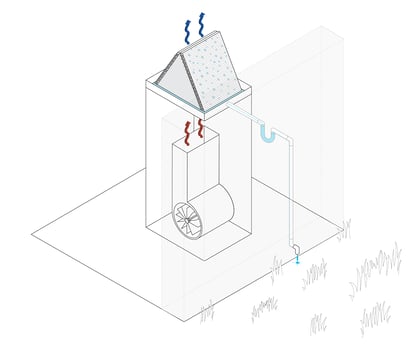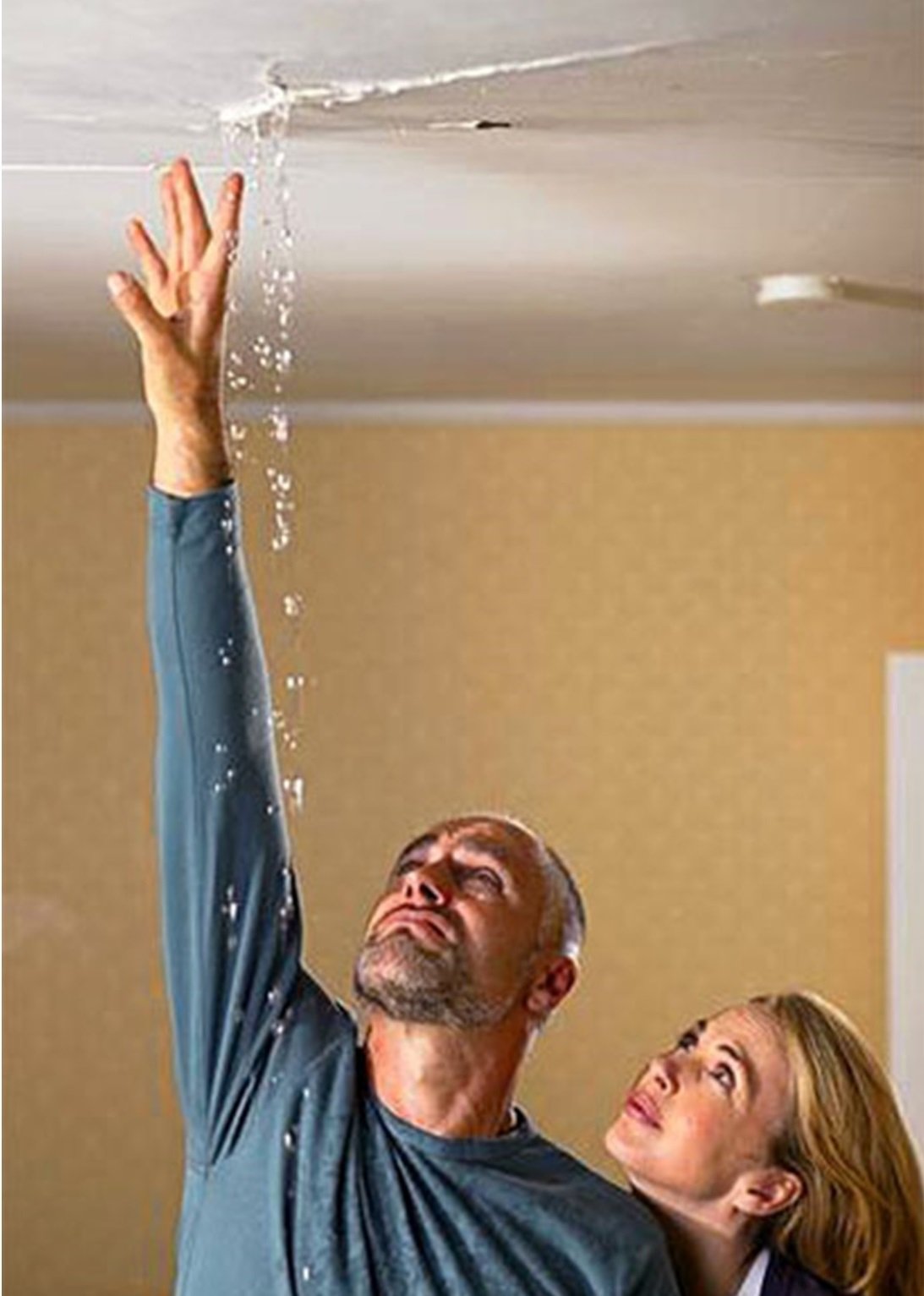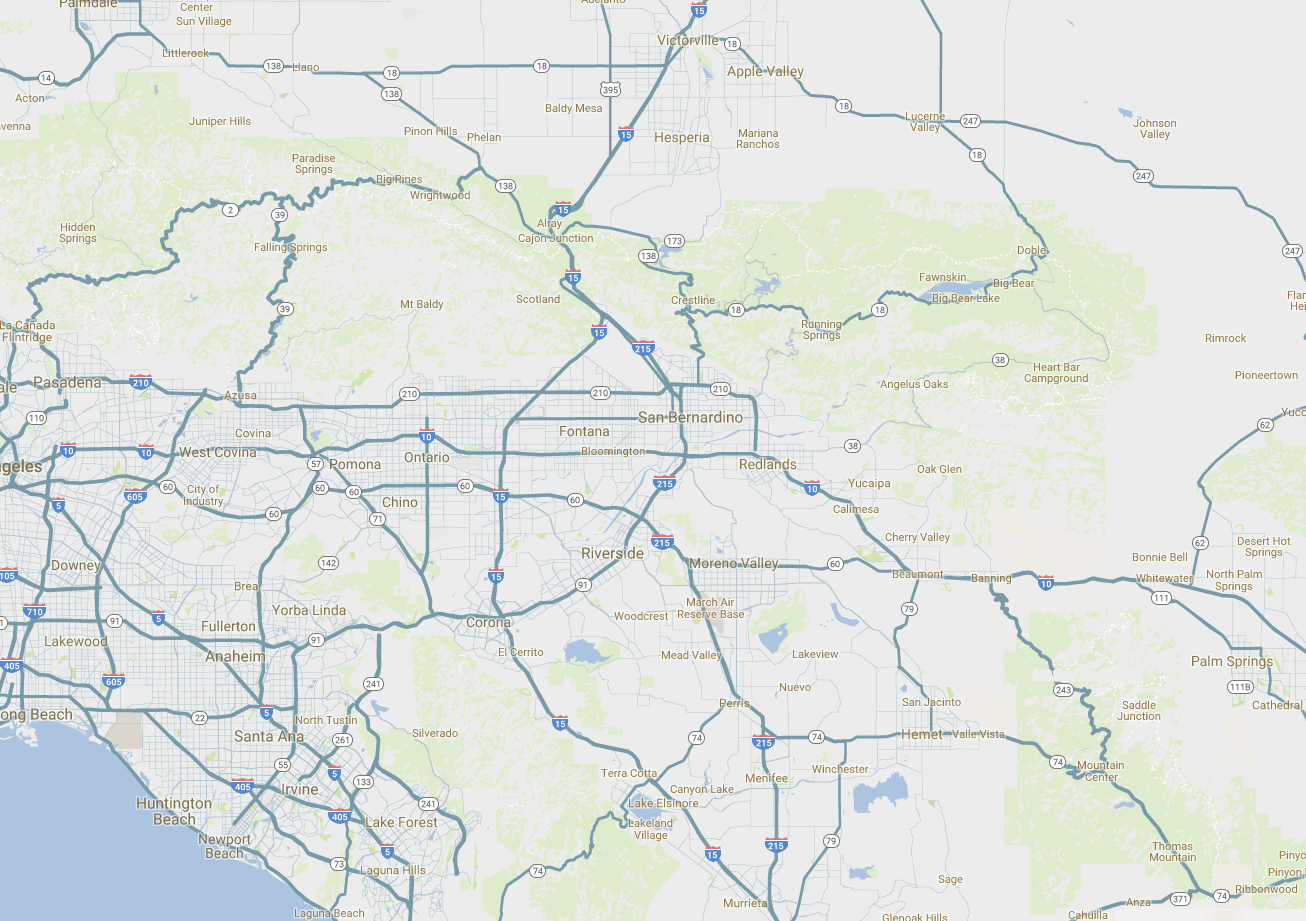When you are running your AC system and notice water leaking around the indoor unit, there is likely an issue. Air conditioners do produce moisture as a byproduct of the cooling process but in normal operation, that moisture should be contained and should flow safely outside your home.
So what’s causing your air conditioning system to leak water?
A few common issues that can cause your AC system to leak include:
- A frozen evaporator coil
- A leaky drain pan
- A clogged condensate line
We’ll explain each of the issues below. But first, we’ll explain why it’s normal for air conditioners to produce some moisture in the first place.
Need a professional to diagnose and repair an AC system leak? Just give Burgeson’s a call. We’ve been serving homeowners in Southern California for 72+ years and provide fast, reliable repairs.
Why do AC SYSTEMS produce moisture in the first place?
Your central AC system has two jobs: to cool and dehumidify the air in your home. And the dehumidification process is what produces moisture.
As your home’s warm air is pulled into the air handler to be cooled, it passes over the cold evaporator coil. This coil extracts moisture and heat from the warm air. The moisture collects on the coil and drips down into a pan under the evaporator coil. Eventually, the water in the pan drains safely outside via the condensate drain line (see image below).

If you see water pooling around your indoor unit it means there is likely a problem somewhere in the dehumidification process outlined above.
Let’s take a look at some of those problems.
AC issue #1: A frozen evaporator coil
Your evaporator coil is located above your furnace and is the indoor part of your AC system. It’s filled with very cold refrigerant that extracts heat and moisture from the air (see below).
Sometimes, though, the refrigerant temperature drops too low, which causes ice to form on the evaporator coil. That ice will eventually thaw and overflow the drain pan (the pan underneath the evaporator coil), which may explain the puddle of water at your indoor unit.
Problems that can cause the evaporator coil to freeze over include:
- A dirty air filter. A clogged filter lowers the amount of warm air that can enter your AC system. Without enough warm air passing over the coil, the refrigerant inside the coil will eventually drop to lower-than-normal temperature levels.
- Dirty evaporator coil. When dirt and / or grime settle on the coil, they create a barrier between the warm air and the cold refrigerant, which can cause refrigerant temperatures to drop.
- Obstructed vents. If one or more of your home’s vents are obstructed by furniture, plants or even dust, this can block airflow. And less warm air over the coil can cause the coil to drop in temperature and freeze over.
- A refrigerant leak. Refrigerant leaking out of the AC system leads to a loss of pressure, which in turn causes a drop in refrigerant temperature. Eventually, the drop in temperature can cause the evaporator coil to freeze over.
What to do: If you have a frozen evaporator coil, you likely need a professional to diagnose the root issue that’s causing the coil to freeze in the first place. Then, they can recommend the appropriate repair.
AC issue #2: A leaky drain pan or tripped water overflow safety sensor
Your AC’s drain pan sits directly underneath the evaporator coil and is designed to safely collect water that drips off the evaporator coil.
However, if that drain pan rusts or cracks, it could cause water to leak from the pan.
A malfunctioning safety sensor could also be the problem. If your AC has a safety sensor (older models may not have them), it should be installed on the side of the drain pan. The sensor acts as a safety device that automatically shuts the AC off when water levels in the pan rise too high. This prevents the AC from producing more moisture and overflowing the drain pan.
If the sensor is broken or malfunctioning, it won’t shut your AC off when it needs to which could cause water to overflow the drain pan.
What to do: Have a professional confirm that the issue is either a leaky drain pan or a bad sensor. Then, they can replace the appropriate part to solve the problem.
AC issue #3: A clogged condensate line
Your AC produces moisture during the dehumidification process (as we explained above). In normal operation, that water should drain outside your home via the condensate drain line.
However, if there is a clog in the condensate drain line, the water will back up, overflow the drain pan and spill out around your indoor unit (see below).
It’s not uncommon for drain lines to clog. When dirt or debris collect inside the PVC pipe, it can cause blockages that prevent water from flowing safely outside.
What to do: Check the drain line at the outside of your home. You can use a wet-vac to try and pull out any blockages. If the leaking still persists after that, you’ll need to have a professional evaluate and clear the blockage.
Need a tech to repair your leaky AC?
Just give Burgeson’s a call.
We have over 72 years of experience doing AC repair for homeowners in the Inland Empire and beyond. We’ve seen hundreds of leaking AC systems in our time and we know how to repair them correctly and safely, the first time around.
Related reading:













